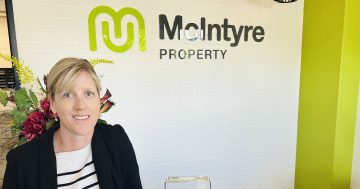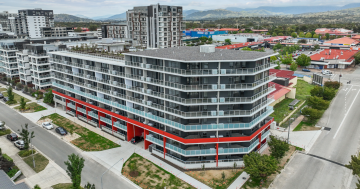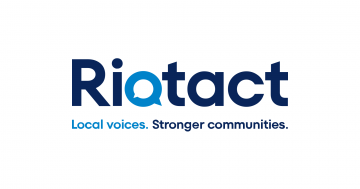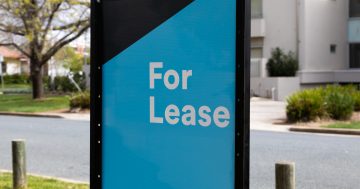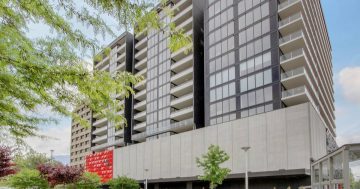
Tenants will no longer need to frequently move with the introduction of Independent Property Management’s long term lease program.
Catherine still has possessions in storage from the last time she moved. It didn’t seem worth finding spaces for them all when she knew she’d have to box them all up again in a few months, so now she’s paying for a storage unit as well as her rent. She’s already moved four times in the past five years, and her lease is up in six weeks. She’d love to buy some plants for her balcony, or hang some paintings on the wall, but it doesn’t seem worth it when she’ll just have to move again shortly.
Independent Property Management hear several tales like Catherine’s. These are tenants who want nothing more than to settle down in one spot, find their favourite local cafe and introduce their children to the nearby schools. But instead, they’re asked to move by landlords who want to sell up, move in or renovate. Some landlords also only offer six-month leases, and because there’s such a tight vacancy rate, tenants like Catherine might find themselves with no choice but to accept six months.
For landlords, too, short lease terms can create problems. A high turnover of tenants means that the property is more likely to experience periods of vacancy, with all the associated costs of advertising and qualifying and approving new tenants each time. Tenants moving their possessions in and out of the property also means more wear and tear – before you know it, you’re repainting again.
Canberra has continued to have the country’s tightest rental market throughout 2017, at a squeaky 0.8% vacancy rate. That’s made life harder for tenants, and with more and more families moving into Canberra, something needed to change.
But there is hope for Catherine and the hundreds of other tenants looking for a long-term solution. This year Independent Property Management introduced long term leases, a program created to provide landlords and tenants lease terms of up to five years.
This can be a win-win for both tenants and landlords who are provided with both financial security and peace of mind. But in a world of legislation, contracts and rules how does something like this actually work?
“We surveyed both landlords and tenants about the idea, and the thing that came up on both sides was the desire to have a one year ‘trial period’ before committing themselves to a longer term.” Hannah Gill, Director of Independent Property Management, explains.
After a lot of research Hannah and the team created a scheme where:
- Long-term leases will be offered as a one-year lease in the first instance, with an option to renew for two, three or four years after that first year if both parties agree
- The agreement includes a predetermined annual rent increase, either a percentage or a dollar value increase
- If all goes well in the first year and parties agree, rental inspections may be reduced from two down to one per year. No more midnight grout-scrubbing sessions!
Long lease terms are new to Canberra so not yet fully supported by the current tenancy legislation, but the Independent Property Management team are not easily daunted. “We came up with the necessary tribunal endorsements for clauses to support long leases if both parties agree”, explains Hannah.

Hannah Gill says tenants will love the security and peace of mind of a long-term lease.
How does this scheme benefit people like Catherine?
Tenants can enjoy the security and peace of mind that comes with knowing that they can stay put for several years. As their obligations under the Residential Tenancies Act are already pretty clear, there won’t be any extra requirements as long as they pay rent and keep the place in good order. There also won’t be unexpected rent hikes so a tenant has more ability to forward plan their finances.
Catherine, who’s finally signed a long term lease, is pretty thrilled. “We’ve always been really hesitant to invest in plants for the balcony or artwork for the walls before, but knowing we’ve got years ahead of us makes me excited about investing in things that make the house a home. At our last apartment, with so much of our stuff in storage, it felt like a long-term hotel. Now there’s an emotional attachment and no stress”.
What makes the scheme attractive to landlords?
Landlords have the security of knowing that their tenant will stay for the long term, avoiding vacancy periods and end-of-lease costs, and by including rent increases in the lease they can project their cash flow into the future.
Extra conveniences are offered to the landlord so that their cash flow isn’t compromised by the longer term.
“We include an asset register as part of the service”, says Hannah, “where we outline and recommend a proactive maintenance plan and budget for ongoing upkeep”. A small percentage of the weekly rent – between $10 and $20 per week – is kept back in a sinking fund, to be made available for large maintenance or renovation jobs at the end of the lease term. That way, landlords aren’t left having to find spare cash to replace carpets and dealing with a vacancy period to boot.
Independent launched long leasing in January this year and so far, has attracted a lot of interest from tenants and landlords.
“This is a relatively new idea to Canberra, but very standard practice overseas. In some European countries, it’s not uncommon for people to sign leases for ten years or more. Tenants love the security and peace of mind that’s offered when they have a home for longer. The landlords are pleased to know they have a reliable, responsible tenant who’s committed to staying in the property long term.”
And for people like Catherine? Well, she’s just looking forward to some stress-free years with no rental applications, moving boxes or storage sheds.
If you are a tenant or landlord and would like more information on long term leases, contact the Independent Property Management team today.
What do you think – as a tenant or landlord, would you explore the idea of a long term lease?
This is a sponsored article, though all opinions are the author’s own. For more information on paid content, see our sponsored content policy.












